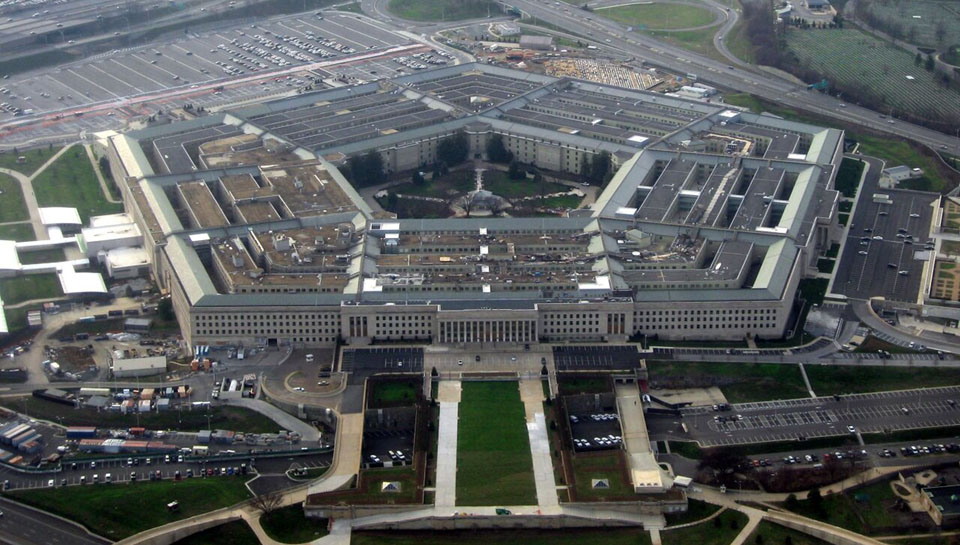
No one has done a better job of predicting the final outcomes of deals on the defense budget since sequestration was made law than Mackenzie Eaglen of the American Enterprise Institute. So we asked her to predict what this election will mean to the 2018 defense budget. With the election tomorrow, we couldn’t think of a more important topic for our readers. In spite of illness and the avalanche of presidential election data, Mackenzie came through. Read on! The Editor.
What will the presidential election mean to the defense budget? While Hillary Clinton and her team remain tight-buttoned on their views about specific military issues, their spending outlook should be apparent to all.
For starters, Clinton backs a repeal of the Budget Control Act for both defense and non-defense discretionary spending. This is pretty much up there in Washington these days with motherhood and apple pie — aside from some Tea Party-types. But while new polling suggests that Americans may have de-electrified the traditional third rail of politics, Mrs. Clinton also refuses to consider entitlement reform, much like the current president (and the one before him after a failed attempt to reform Social Security). At the final debate, she drew a clear line in the sand, stating: “I will not cut benefits.” And even though Trump’s purported military buildup would raise defense spending significantly, his own refusal to pursue entitlement reform would prevent him from achieving those levels of increases.
Today’s Congress remains fundamentally unchanged in its views on spending. The new Congress might move further away from a “grand bargain” should the Democrats take the Senate and Speaker Ryan’s coalition of moderate Republicans shrink after the election, which appears likely. What does this all add up to? The near-future political environment remains unaffected when compared to that of the past three budget deals to modify the Budget Control Act. All the key variables remain where they were.
So, let’s recap to refresh our collective memories, as the past is mostly prologue in this case. In January 2013 — three months into the fiscal year — then Senate Minority Leader Mitch McConnell and Vice President Joe Biden reached an agreement on the “fiscal cliff” deal, the first since the 2011 imposition of the Budget Control Act. This frontloaded mini-deal added about $20 billion back to fiscal year 2013’s defense budget, but subtracted $4 billion from the year after—a little different than the deals that would follow.
Less than a year later, legislative brinkmanship over Obamacare triggered a federal government shutdown and nearly a U.S. default, leaving trust in Congress and the GOP in particular at historic lows. But within months, Budget Committee chairs Paul Ryan and Patty Murray reached a second two-year spending compromise that passed in early December. The Ryan-Murray 2013 Bipartisan Budget Act amended the caps for defense in 2014 and 2015 by $22 billion and $9 billion, respectively.
With that two-year deal came a budget battle respite, but the deadline crept up again. In October of 2015, outgoing Speaker of the House John Boehner reached a last-minute accord with President Obama for another two years of government spending. The 2015 Bipartisan Budget Act we currently live under revised the caps for defense for 2016 and 2017 by $25 billion and $15 billion, respectively. It also gave the Pentagon an additional $8 billion each year in OCO war supplemental funding.
In total, the three budget deals amended defense caps by an average of $17.4 billion, or 3.4 percent above the original cap each year, heavily front loaded to the first year. So while they offered a reprieve for the US military, they hardly were generous in giving back less than a fifth of the defense budget wiped out annually under the Budget Control Act. The two latest budget deals raised the BCA caps for both defense and non-defense discretionary spending, and the fiscal cliff deal was intended to—but did not, for technical reasons.
To prepare ostensibly budget-neutral proposals, each spending deal included increasingly low-hanging “offset” fruit (or “pay-fors”), such as selling Strategic Petroleum Reserve oil or accelerating the rate of pension plan payments. But the well of these gimmicks has run dry. The only minor hiccup in the next spending fight—the need for an $8 billion or more war supplemental bill in March 2017—will likely be swiftly resolved.
What does this mean for defense spending in the near future? The small chance of a grand bargain in Washington means the “muddle-through” of the last six years will continue to reign supreme for the Pentagon. Policymakers will probably reach another mini-deal late in 2017 that gives defense a minor boost over the BCA caps, but likely won’t even reach President Obama’s 2017 budget submission.
On the other hand, as I wrote last December, policymakers increasingly accept the usage of war supplemental funding as a necessary relief valve for the military. Expect all parties to agree on the continued funding of $30 billion or more in enduring base requirements that currently resides in the “emergency” account. Further, the next president and Congress could provide even more OCO relief above the modest amounts included in the 2015 budget deal.
By contrast, the next deal is not likely to be modeled after the previous three because all the easy bill-payers have been used. The only key variable left unknown at this point is how the summer 2017 debt ceiling deadline interacts with the next spending deal. It will likely be another two-year deal because it’s simply not worth the headache to go through the misery and time to get just a one-year reprieve, and both parties will expect the Senate to be GOP-controlled in 2019.
There’s one thing we do know. Whatever minor increases the defense budget receives in 2018 and 2019 through both base and OCO spending, it won’t be enough. Even Obama’s current inadequate military budget will require at least $113 billion more than allowed under the BCA caps, and new estimates put the real size of that figure at around $250 billion.
For years, defense hawks advocated a return to the minimally realistic budget advanced by Secretary Gates in 2012, the last budget created free of arbitrary spending caps and informed by threats. Yet even that budget did not account for the worsening global environment America faces today. Nor could the industrial base effectively absorb that level of funding today given the steep decline in the volume of equipment purchased in the last six years. Even the American Enterprise Institute team could not reach those budget levels by spending an extra $1.3 trillion during its recent Strategic Choices exercise.
A modest budget deal will be hailed as a success in providing budget stability and predictability for Pentagon officials. This will also reveal that what truly ails the Defense Department is not that politicians wait until the last minute to revise the spending law, but that the US military simply isn’t getting enough money to do the job.
Mackenzie Eaglen is a defense expert at the conservative American Enterprise Institute.
Navy is down $1B in munitions from ops in Red Sea, says SECNAV
The dollar figure from the secretary comes as Speaker of the House Rep. Mike Johnson said he is ready to bring the supplemental funding bill the Navy needs passed to the floor for a vote.


























